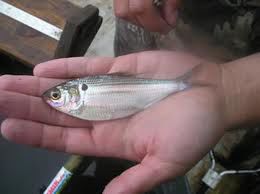OUTDOORS: Shad explosion about to occur on area lakes
Published 3:10 pm Tuesday, April 7, 2020

- outdoors
Lake Sinclair and Lake Oconee have two types of shad in the lakes. The first type is the threadfin, which can grow to 6 to 9 inches but usually only measure 2 to 4 inches. They are often referred to as yellowtails due to the color of their tails.
Due to their small size, the threadfin shad is a perfect size meal for crappie, largemouth, hybrid/striped/white bass and even catfish. Threadfin shad make up about 80% of the diet of fish in area lakes. Threadfin shad are very abundant in both area lakes.
The second type of shad in area lakes is the gizzard shad and it grows to a much larger size. It can grow to as much as 15 inches and as much as two pounds. At those sizes, it is no longer a good food source, except for the largest game fish in the lake. Larger gamefish like striped bass and giant catfish can easily eat a large gizzard shad.
Both threadfin and gizzard shad primarily feed on plankton. However, threadfin shad will occasionally feed on the larvae of other fish. In addition to feeding on plankton when small, the gizzard shad will begin feeding on algae and disintegrated matter on the bottom of the lake.
The two shads look somewhat similar when small, but the easiest way to tell them apart is the distinguishing purple dot near the gill plate on each side of the threadfin shad. The threadfin shad spends a large part of their life in deeper water but will move to shallow shorelines to spawn in the spring.
The threadfin shad move to shallow water in huge numbers in the spring to spawn when the water temperature is in the 65- to 75- degree range. They move along shorelines by the thousands to lay their eggs on rocks, grass, boat docks, seawalls and any woody structure.
That event is about to explode on area lakes but you have to be on the lake early (before sunrise) or you will miss the explosion. It normally occurs at daybreak and generally stops as soon as the sun hits the water. It happens all over the lake but some locations are better than others.
The first time I witnessed the shad spawn was many years ago and I was fishing at first light. All of a sudden, a clicking sound came from the shoreline and the sound was occasionally interrupted by the loud sound of a largemouth striking.
It did not take me long to investigate further and I begin casting a topwater plug into the frenzy. The first largemouth I caught throw up shad all over me and my boat. Since that day I have become educated about the shad spawn and have taken my share of largemouth that were feeding on shad during this annual early spring event.
We are currently in the annual shad spawn and it could last a few days or a couple of weeks and then it is over. It generally will not occur all over the lake at one time but the shad spawn timing and location are hard to predict. Be on the water at your favorite shoreline before daylight and watch and listen for that tell-tell clicking sound.
I have my favorite locations that I check each year but I try to check numerous other locations and usually some of my fellow anglers will put out the word. The shad will spawn in the main lake as well as in lake coves. I have caught largemouth at my dock from the shad spawn as I was about to enter my boat and go to a favorite spawning location.
One of the funniest happenings while fishing the shad spawn happened one morning at first light. The shad were just in a frenzy depositing their eggs along the shoreline and something was exploding on them. After throwing several lures with no success, I moved closer to get a better look at the action and there were literally hundreds of catfish filling their bellies on the shad. That was the only time I ever saw catfish eating shad during the spawn.
Some excellent lures to use during the shad spawn are topwater plugs, spinnerbaits, flukes, small crankbaits, Trick worms and maybe some of the other worm rigs (shaky head, Ned rig, Texas rig). This is not slow fishing because the action can be fast and furious so choose a lure you feel comfortable using to make repeated cast into the frenzy. Various colors will work but white is a good choice.
Like I said the shad spawn only lasts a few minutes to an hour at first light. Cloudy weather might prolong the spawn on any given morning but as soon as the sun hits the water it usually ends pretty quick.
I have only received a few notifications of spawning activity as I am writing this article but by the time you read this article in the newspaper, the spawn may have come and gone but I sure hope you did not miss the explosion.
Good fishing and see you next week.
Outdoors columnist Bobby Peoples can be reached at brpeoples995@gmail.com.





